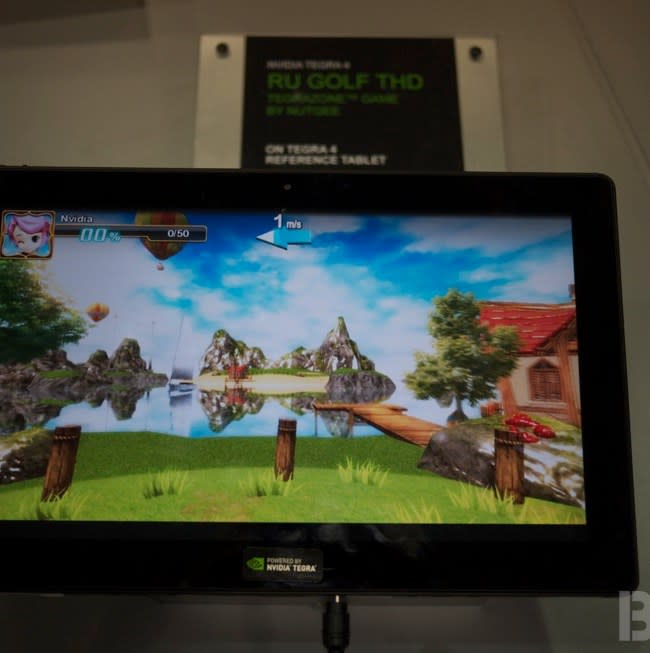Hands on with NVIDIA’s blazing fast Tegra 4 reference tablet
In a world where frequent technology shifts are commonplace, it’s tough to stand out. Phones are getting bigger and faster with each passing month and crafting a device with real-world performance that truly impresses is a challenging task. While the reference tablet we played with today at NVIDIA’s (NVDA) booth will never reach consumers’ hands, the internals are very much worthy of your attention, as there’s a good chance that they’ll serve as the powerhouse in your next smartphone or tablet.
[More from BGR: Why every rival tech company should be scared to death of Samsung]
The Tegra 4 is NVIDIA’s newest mobile chipset. Billed as “the world’s fastest mobile processor,” the silicon features four cores, brand-new architecture and 72 GPU cores. The company isn’t releasing exact clockspeed ratings at the moment, but suffice it to say that this thing flies.
[More from BGR: Apple outlook lowered on fear it cannot ‘innovate’ and ‘disrupt’ at pace set by Steve Jobs]
In its reference housing, it was tough to get a chance to test it beyond using the various installed demo apps, but we walked away very impressed. Games moved with console-like fluidity and streaming TV output worked without a hiccup. The chipset also features notable advances in image processing, allowing simultaneous exposure at different light levels and opening new doors in terms of HDR capabilities.
NVIDIA had a bit of a tough run against Qualcomm (QCOM) during the last generation of the processor wars, with its competitor eating up the majority of competitive market share. Performance here is impressive enough, but the real story might be in what’s not included — this chipset does not have an integrated LTE radio.
In a market where LTE is becoming increasingly common, this really might be the writing on the wall, as manufacturers that want to release an NVIDIA-powered LTE handset will have to look elsewhere for cell connectivity. It’s a shame, as NVIDIA really has made some impressive strides, but we fear the LTE omission might be a sizable barrier, especially where high-volume flagship handsets are concerned.
This article was originally published on BGR.com


